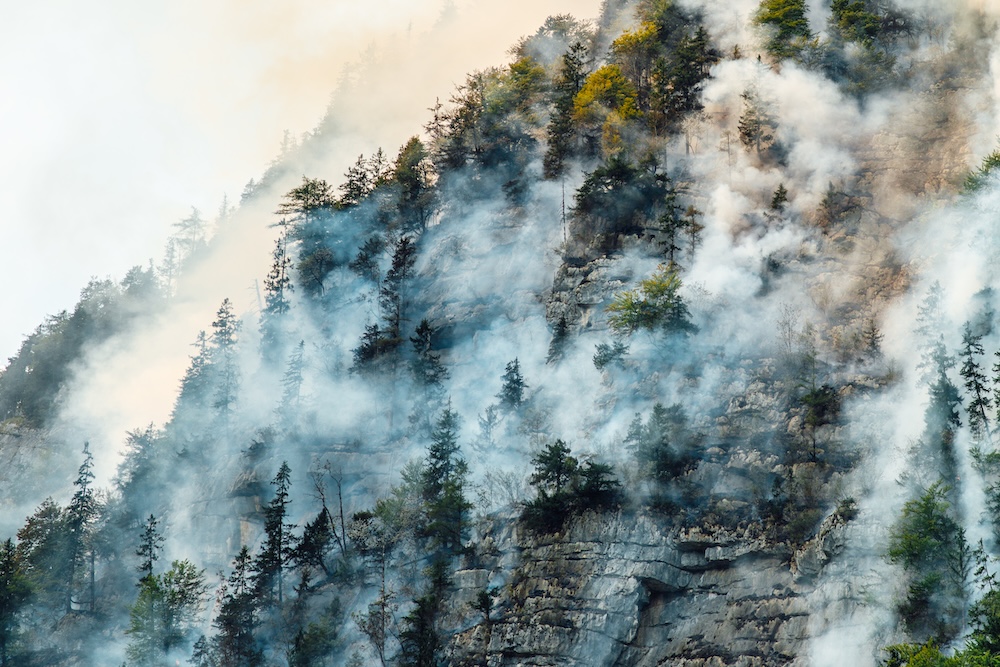Wildfires are no longer seasonal disasters—they’re becoming a year-round global threat. Fueled by rising temperatures, prolonged droughts, and mismanaged landscapes, 2025 is shaping up to be one of the most destructive wildfire years on record. But even as wildfires burn hotter, faster, and further, there are powerful solutions taking root. From Indigenous land practices to AI-powered early detection, new strategies are helping communities fight back.
Here are 15 crucial wildfire facts from 2025, each paired with a reason for hope.
1. Wildfire Seasons Are Now Year-Round
Regions like California, Australia, and the Mediterranean are seeing fire activity in months that were once considered “off-season.”
Why There’s Still Hope
Prescribed burning and Indigenous fire stewardship are being reintegrated into land management, reducing fuel buildup before fires begin.
2. 2025 Is On Track to Be the Most Destructive Fire Year Globally
The total acreage burned worldwide is expected to surpass previous records, with Canada, Greece, and Chile experiencing unprecedented losses.
Why There’s Still Hope
Satellite-based fire monitoring systems are giving first responders more lead time than ever before, improving containment strategies.
3. Wildfires Now Release More CO₂ Than Cars in Some Countries
In places like Indonesia and Siberia, forest fires emit more carbon annually than transportation sectors.
Why There’s Still Hope
Reforestation programs are being redesigned to prioritize native species and carbon sequestration, creating fire-resilient ecosystems.
4. Extreme Heatwaves Are Linked to Fire Ignition
The record-breaking heatwaves of 2025 have contributed to soil and vegetation drying, making them more flammable.
Why There’s Still Hope
Green infrastructure—like tree-lined corridors and shaded urban areas—helps reduce ambient temperatures and fire risk in populated zones.
5. Lightning Fires Are Increasing
Warming temperatures increase the frequency of dry lightning, a major cause of fires in remote regions.
Why There’s Still Hope
Drones and satellite sensors are now detecting remote lightning-strike fires faster than human patrols ever could.
6. Firefighters Are Facing More Frequent Trauma and Injury
The physical and emotional toll on wildfire response teams is mounting with each severe season.
Why There’s Still Hope
Mental health support and rest rotation programs are being expanded, along with climate hazard pay and safety reforms for first responders.
7. Insurance Companies Are Pulling Out of High-Risk Fire Zones
Many homeowners are losing fire insurance as insurers pull coverage in at-risk areas.
Why There’s Still Hope
Governments and cooperatives are introducing public wildfire insurance pools and incentivizing home hardening for communities at risk.
8. Smoke From Wildfires Now Affects Cities Thousands of Miles Away
Air quality alerts from distant fires are now common across North America, Europe, and Asia.
Why There’s Still Hope
Cities are investing in air purification infrastructure, like filtered shelters and smoke-aware emergency response protocols.
9. Ecosystems Are Losing the Ability to Recover Between Fires
Shorter intervals between wildfires mean some forests aren’t regenerating naturally.
Why There’s Still Hope
Seed banking, assisted migration, and targeted replanting are being used to help forests recover and adapt to changing fire intervals.
10. Fires Are Displacing More Wildlife Than Ever Before
Entire habitats are being wiped out before species can migrate or adapt.
Why There’s Still Hope
Wildlife corridors and early evacuation planning for animal sanctuaries are becoming a standard part of conservation response.
11. More Human-Caused Fires Than Natural Ones
Negligence, arson, and infrastructure failure now cause the majority of wildfires globally.
Why There’s Still Hope
Education campaigns, utility infrastructure upgrades, and strict fire bans during high-risk periods are reducing human-ignited events.
12. Wildfires Disproportionately Harm Marginalized Communities
Low-income and rural populations face the greatest barriers to evacuation and recovery.
Why There’s Still Hope
Equity-based emergency planning is gaining traction, ensuring that fire warnings, shelters, and recovery aid reach vulnerable groups first.
13. Megafires Are Becoming Common
Fires exceeding 100,000 acres are no longer rare—they’re part of the new norm.
Why There’s Still Hope
New fire modeling systems help predict megafire behavior, enabling earlier evacuations and firebreak planning.
14. Wildfire Smoke Increases Hospitalizations
Long-term exposure to smoke particles is now linked to higher rates of asthma, heart issues, and even neurological decline.
Why There’s Still Hope
Public health systems are adapting: smoke alert systems, indoor air standards, and telemedicine for vulnerable patients are expanding rapidly.
15. Fire Seasons Are Now Driving Migration
Entire communities in California, Australia, and the Mediterranean are permanently relocating due to repeated fire loss.
Why There’s Still Hope
Some are rebuilding using fire-resistant architecture, permaculture design, and climate-adapted zoning that reduces future risk.
Final Thoughts: Fire Is Natural—But This Isn’t
Not all fire is bad. In fact, fire has always been part of healthy ecosystems. But what we’re seeing in 2025 is something different: fire fueled by fossil-driven warming, poor land management, and outdated systems that can’t keep up.
The solutions are not abstract—they’re already working in pockets around the world. The question is whether we can scale them fast enough.
Fighting fire with science, Indigenous wisdom, and community resilience isn’t just possible. It’s essential. And it’s happening now.









Reader Interactions